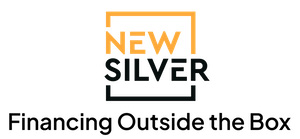House Flipping Calculator

House Flipping Calculator Results
Net Profit
(After Repair Value - Total Cost)Return on Investment (ROI)
(Net Profit / Total Cash Invested)Total Cash Invested
(Sum Of All Costs + Down Payment)Return On Equity
(Net Profit / Total Equity Invested)Loan Amount
Down Payment
Fund Your Next Flip With Munxar Finance LLC
Fix & Flip
Funds for purchase + rehab or refinance + rehab
Get up to $5,000,000
Interest rate 9.25 - 11.25%
Origination 1.25 - 1.75%
Up to 100% construction
Rent
30 year fixed product for stabilized properties
Get up to $3,000,000
Interest rate from 6.125%
Origination 1 - 2%
30-year fixed rate
Ground Up
Construction loans for residential builders
Get up to $5,000,000
Interest rate 9.75 - 11.5%
Origination 1.5 - 2%
Up to 24 months
House Flip Profit Calculator Definitions
This house flip profit calculator is designed to show you how much profit you can make when executing a fix and flip property deal. It includes a detailed breakdown of Net Profit, ROI, Total Cash Invested, Return on Equity, Loan Amount, Down Payment & Monthly Loan Repayment, together with other important details. It is a simple, user-friendly fix and flip calculator.
The Fix and Flip Property Purchase Price is the amount that you intend to pay for the property. It is very common for real estate investors to use the 70% rule to determine the property purchase price. According to the 70% Rule
Maximum Purchase Price = After Repair Value * 70% – Repair Costs
Some investors call this the acquisition cost.
The After Repair Value is a realistic estimate of what the property will be worth after the renovations have been completed. It is an essential metric to understand when flipping houses, because it can help you determine the profit potential of the flip.
To gain a good understanding of the ARV, it is best to use comparable properties (comps). These are recently sold properties in the area that have similar features to the investment property. Comps provide hard data on what the market is willing to pay for a well maintained property in the target neighborhood.
To get a good sense of the After Repair Value, you can use Munxar Finance LLC’s free ARV Calculator.
The rehab costs can make or break a fix and flip deal. The underlying goal is to complete repairs that will immediately improve the market value of the property. Improving the kitchen, bathrooms and bedrooms will generally improve the resale value of a property, but there are plenty of other profitable rehab costs that you can focus on. The point is, you need to be certain that you will make a solid return on investment with each repair that you complete.
When you apply for a hard money loan, it is customary to make a down payment. At this moment in time, 20% is the minimum down payment for a hard money loan, but this can vary from lender to lender.
Closing costs can include broker fees, legal fees, titles fees and other administrative costs. With this house flip calculator, the closing costs are separate to the realtor fee and the loan origination fee. This partially explains why the closing costs are relatively low by default.
This is the amount of time that you expect to hold the property for. The longer you hold the property, the greater the carrying costs will be. This is why fix and flip investors like to work with short and detailed timelines. Every extra month of holding time effectively reduces the ROI that a house flipper can expect to make when the property is resold.
A hard money loan is a short-term real estate loan that is often used to execute a fix and flip deal. While the interest rate of a hard money loan might be higher than the interest rate of a traditional loan, what many people fail to appreciate is that using a hard money loan can improve the investors return on equity.
A fix and flip loan allows you to leverage the capital of the hard money lender, rather than relying exclusively on your own funds. For most real estate investors, this means that you only need to put down 20% of the purchase price, rather than 100% of the purchase price. In other words, a hard money loan minimizes the equity requirement of the investor, without impeding the profitability of the deal. That is why short-term real estate loans are so popular when completing a house flip project.
Property insurance is a monthly fee that you are obliged to pay while holding the property. Property insurance can provide coverage for damages caused by fire, flooding, theft, weather, and other risks.
The origination fee with house flipping is typically the fee that a lender will charge when issuing a hard money loan. It typically ranges from 2 – 5 % of the loan amount. The origination fee has a small but notable impact on the potential profitability.
In order to sell a property quickly, you will more than likely incur some marketing costs. Thankfully, these fees are easy to justify, because the quicker the turnaround time, the more money you are likely to make when the property is sold. This is because the shorter you hold the property, the lower your carrying costs will be.